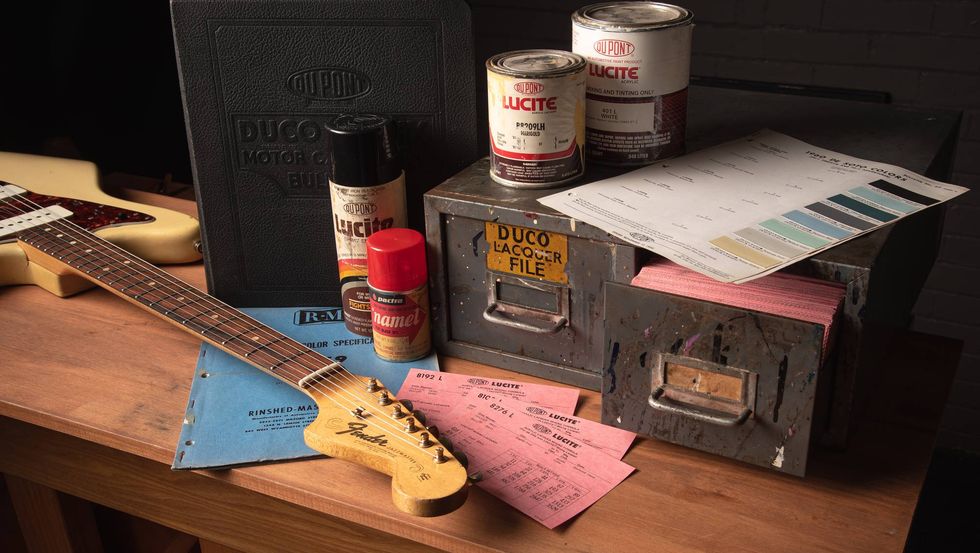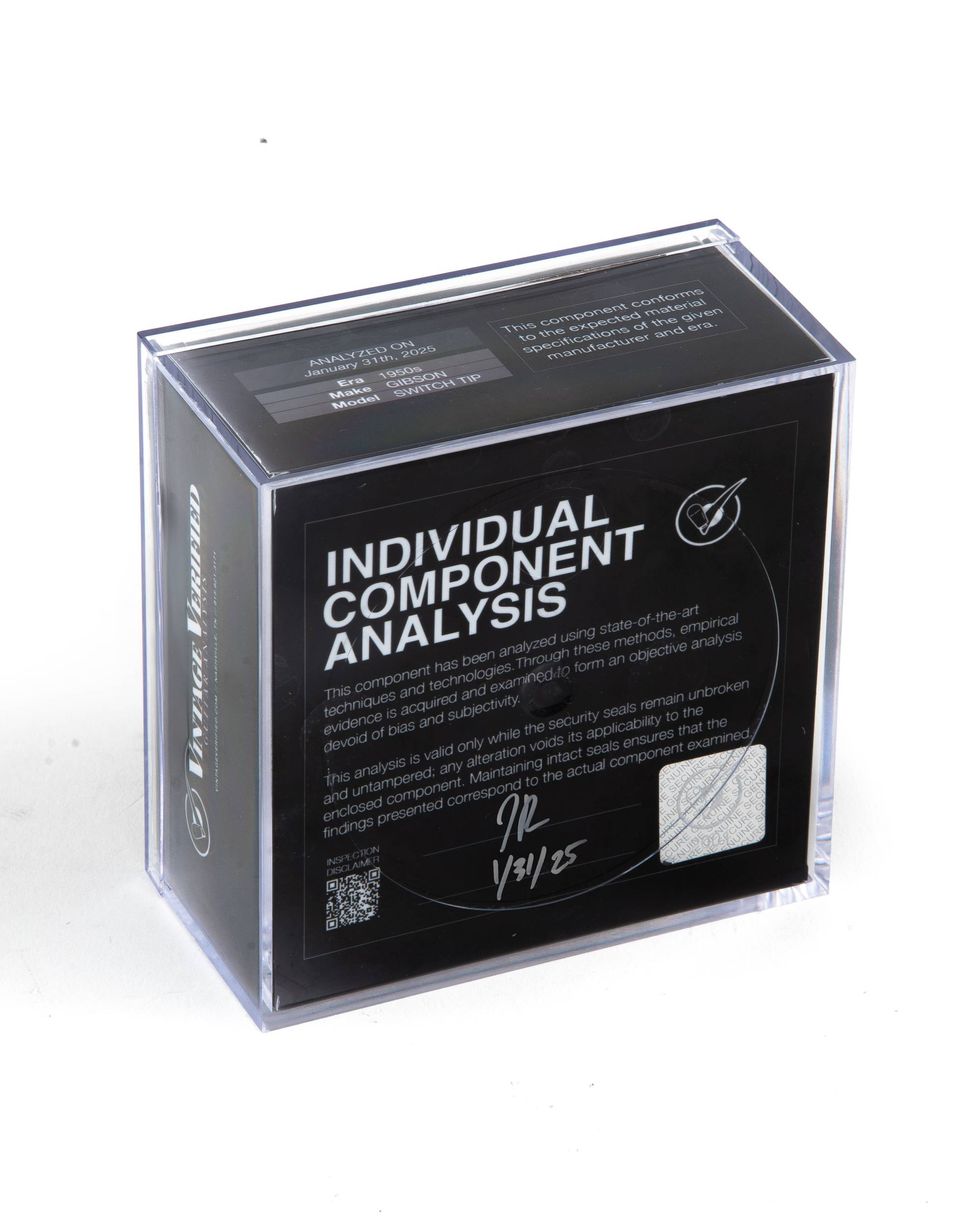Montreal pedal builder Greg Djerrahian releases his stompbox creations under the SolidGoldFX handle. While his arsenal includes some classic-flavored boost, overdrive, and fuzz pedals, he also dabbles in less-conventional pedals with innovative performance features. His new Apollo phaser is the latest addition to the latter category. Though it shares the lofty name of the Greek god of music, this analog 4-stage phaser with tap-tempo has a price that’s anything but.
The Son of Zeus
When talking about the history of the phaser effect in the context of guitar, it is nearly impossible not to mention Eddie Van Halen’s use of the MXR Phase 90 in “Eruption.” But the fact is that phasing can add an aura of slow, soaring psychedelia to any type of music or guitar passage. One of the real positives about the Apollo is that it gives players more control over tones and textures than most phasers on the market.
Mind Control, for Beginners
The Apollo comes in a stylish white case with attractive blue graphics and lettering. Its control layout is simple and does not confuse. Knobs include depth, mode, regen, and speed. The depth control determines the overall intensity of the effect and the function can also be controlled with an expression pedal—a great feature that really extends the pedal’s capabilities in performance. The regen knob also contributes to the intensity—making the phasing much more resonant at higher settings. At its highest settings, it will make the phasing effect as prominent in the mix as your guitar. And by turning down both the depth and regen controls you can dial in a very subtle phase effect—perfect for wah-like effects and light swirling textures.
When you think of a prototypical phasing sound, you probably imagine a swirling effect that travels in a steady, circular motion. But with the Apollo’s mode control you can select between eight preset rhythmic patterns that place the phase pulses at different intervals and in interesting groupings that really expand the range of available color. There’s no indicator that tells you what modes you’re using, however, which can make using the function a bit of a hunt-and-peck experience. .
There are three ways to set the speed of the phasing undulations on the Apollo—the speed knob, the tap-tempo footswitch, and the 3-position multiplier toggle. To use the latter, dial in a rate with the speed knob or by tapping your foot on the tap footswitch, then decide whether you want to double or quadruple that speed by selecting from the multiplier toggle’s 1, 2, or 4 positions.
Another 3-position toggle allows you to move between traditional sine-wave phasing, manual mode, and random-stepped phasing, which shifts the phase rate in unpredictable, sci-fi-evoking patterns that are quite common in electronic music. It’s certainly not your everyday phasing sound and may not be for everyone, but adventurous players with experimental leanings will love how it can make you feel very disconnected from reality.
Ratings
Pros:
Tap tempo, 3-position multiplier, and random-step setting offer extreme versatility, from classic to way out-there sounds. Expression-pedal capability. Great bang for the buck.
Cons:
Mode control can be confusing. Mono output means you won’t experience the wonder of stereo phasing.
Tones:
Playability/Ease of Use:
Build:
Value:
Street:
$250
SolidGoldFX
solidgoldfx.com
Taken for a Spin
With a Stratocaster in the mix, it’s easy to dial in funky, wah-like phase settings that suit the clarity of the twangy single-coils—and you can enhance the rhythmic aspects of the effect using the tap-tempo function. Taking the speed knob down a bit will send you swirling slowly down a trippy, psychedelic vortex. It’s an inspiring effect that can take over your imagination for hours at a time. Single-coils also play nicely off of the Apollo’s phasing effect because their brighter output paints a hypnotic, wind-swept feel. Humbuckers, on the other hand, highlight the low-end content of the Apollo’s full-bodied sweep. Turning up the intensity with the regen control is great for pumping rhythms at lower sweep speeds. Staying at high intensity and revving up the speed with the multiplier switch at 4 will transport you to positively robotic realms, where the pitch of individual notes is delightfully obscured by a delicious jumble of mechanical but musical babble. Running a nice thick distortion next to the Apollo will give you some driving, undulating rhythm and solo tones. The increased high-end provided by distortion is a fantastic pairing that really highlights how it sweeps back and forth through the frequency spectrum. But don’t let anyone tell you that a phaser has to come before or after the distortion—it can sound awesome either way.
The Verdict
Overall, the Apollo successfully mates musical versatility and depth that’s uncommon in a phaser with a functionality that makes this pedal a potent performance tool. What’s more, the quality components mean the unit is likely to remain in good health on pedalboards for years to come. If you like traditional phaser effects but twitch with excitement at the potential of expanded phasing effects that go way beyond the expected, a spin with the Apollo is well worth the trip.









![Rig Rundown: John 5 [2026]](https://www.premierguitar.com/media-library/youtube.jpg?id=62681883&width=1245&height=700&quality=70&coordinates=0%2C45%2C0%2C45)









![Rig Rundown: Russian Circles’ Mike Sullivan [2025]](https://www.premierguitar.com/media-library/youtube.jpg?id=62303631&width=1245&height=700&quality=70&coordinates=0%2C0%2C0%2C0)







